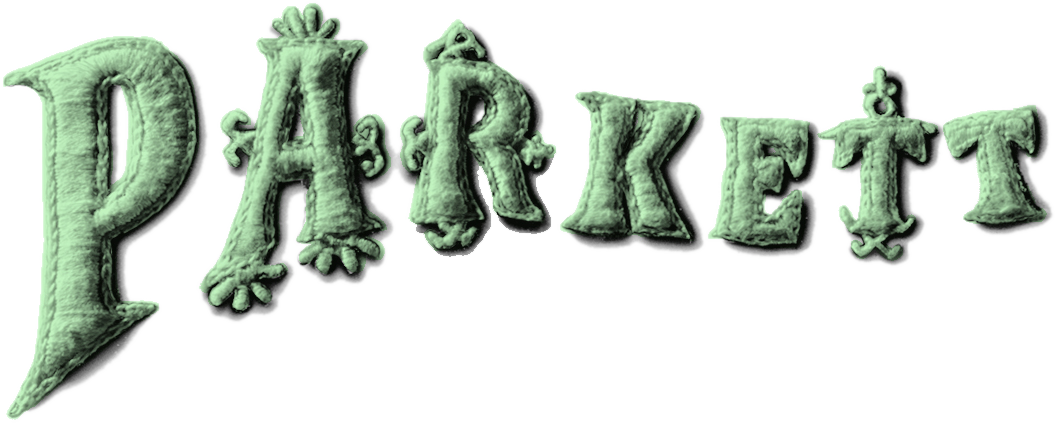Parkett Vol. 59 - 2000 | Maurizio Cattelan, Yayoi Kusama, Kara Walker
Maurizio Cattelan
Read a selected text (PDF)
View edition
Yayoi Kusama
Read a selected text (PDF)
View edition
Kara Walker
Read a selected text (PDF)
View edition
Insert: Andreas Zuest (PDF)
Spine: Dave Eggers
Cumulus
On acceleration by Magrit Rowell (PDF)
Art after 1989 by Laszlo F. Földényi (PDF)
Miscellaneous
Maurizio Cattelan text in Chinese (PDF)
Annette Messager by Elisabeth Bronfen (PDF)
U.S. & Canada
Please place your order through our distributor D.A.P. here.
Browse Selected Texts and more on the Collaboration Artists
Artist Insert
Editorial
On Art, Masquerades, and Anguish. The figure on the cover page of this issue is not performing a wild African dance; she is kneeling as if in silent deference and her primly tied apron seems at odds with the exotic mask pushed away from her face. But the feathers of this mask reach up like powerful antennae into the Parkett logo, symbolically underscoring our intention of bringing together three artists who, as both outsiders and insiders, exploit provocative imagery to challenge the institutions of art and culture in the West. The ambiguity of the mask in Kara Walker’s silhouette is compounded by the unsettling realization that our issue actually has two covers vying for the reader’s attention, one on the front, the other on the back. However, there is a difference, for the dummy with the features of Maurizio Cattelan on the second “front cover” is not usurpative. Despite the slightly diabolic gleam of the eyes, the figure, reproduced in full on page 65, shows the artist as a homunculus wrapped in Beuysian felt and dangling helplessly on a clothes hook. The Insert is by Andreas Züst. As early as the sixties, Japanese artist Yayoi Kusama’s elaborate masquerades already caused a stir when discovered by the New York art world. The recent revival of interest in this artist, as evidenced by a number of important exhibitions and publications, is but appropriate to an intricate oeuvre, energized by unsuspected, wild and beautiful currents. At the same time, her works raise questions aimed at basic social issues and conventions which also govern art. In this edition of Parkett, much is said about anguish—but not about that of expressionist art. In her essay on Kara Walker, Gwendolyn Dubois Shaw discusses the anguish of having to establish identity as an Afro-American woman and artist, and places this quest within the broader context of “the pain of self-performance and of artistic commodification.” Griselda Pollock also speaks of the “titanic struggle with pressures” that assail Yayoi Kusama both from within and without. By comparison Maurizio Cattelan would appear to be a buoyant player, were it not for the burden of impossibility that lurks behind his skepticism. As Alison Gingeras writes, he “disavows the role of the artist as guardian of the Enlightenment ideals of moral rationality, historical consciousness, and truth. Instead his sociology-sans-truth sets into motion a much more disruptive scenario.”
Table of Content
Brasilian Concrete Poetry by Vincent Katz
Body Malaise – Annette Messager’s Anatomical Theater by Elisabeth Bronfen
Maurizio Cattelan
A Grammar of Visual Delinquency by Nicolas Bourriaud
A Sociology Without Truth by Alison Gingeras
Every Artist Can Be a Man by Francesco Bonami
Yayoi Kusama
Between Heaven and Earth: This Languid Weight of Life by Usula Panhand-Bühler
Beyond Oedipus: Desiring Production of Yayoi Kusama by Midori Matsui
Three Thoughts on Femininity, Creativity and Elapsed Time by Grisela Pollock
Kara Walker
Final Cut by Gwendolyn Dubois Shaw
As American as Apple Pie by Elizabeth Janus
Nigger Lover or Will There Be Any Black People in Utopia? by Hamza Walker
Andreas Züst, Insert
Anna Gaskell’s Girl Art by Jan Avgikos
Back to the Future, Les Infos du Paradis by Ali Subotnick
Cumulus from America by Margit Rowell
The Difficulty of Dialogue, Cumulus from Europe by László F. Földényi
The Now Idea: Embroidery by Michelle Nicol





